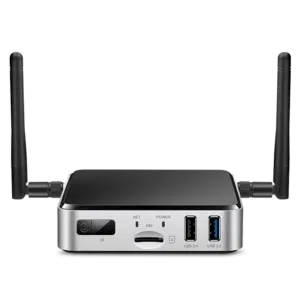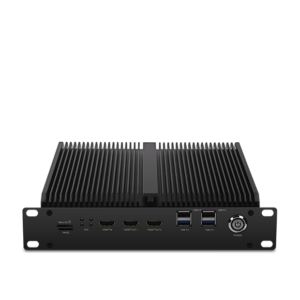Real-World Applications of AI on Edge Devices
Real-World Applications of AI on Edge Devices
Blog Article
Unlocking the Energy of AI on Edge Devices
Real-World Applications of AI on Side Products
Artificial intelligence (AI) is no further restricted to the region of big, centralized knowledge centers. Because of breakthroughs in technology, edge products now perform a vital role in deploying AI directly where knowledge is generated. But what does AI on edge units suggest, and why is it producing this kind of news? Here, we'll explore how edge ai hardware runs in the real world through side units and reveal its wide range of sensible applications.

What's AI on Side Devices?
AI on edge units refers to deploying synthetic intelligence methods on products like smartphones, cameras, drones, or IoT sensors. These devices do not require use of centralized machines for processing data; alternatively, they accomplish evaluation and decisions locally, creating the method faster, better, and often more secure.
The "edge" here just describes computing done close to or at the foundation of knowledge technology, in place of depending on the cloud. This change is driven by the demands for real-time knowledge handling and the requirement to decrease latency, enhance privacy, and minimize bandwidth usage.
Essential Real-World Applications of Side AI
1. Smart Monitoring
AI-powered cameras equipped with skin acceptance, movement recognition, and anomaly detection are transforming security systems. Edge products in this domain can analyze video channels in real-time to identify suspicious actions, remove fake sensors, and enhance community safety. For instance, AI calculations may find strange movements and attentive authorities instantly without the need to deliver movie knowledge to a central host for analysis.
2. Healthcare Monitoring
Wearable units and portable medical equipment are leveraging m.2 ai accelerator for controlling wellness knowledge more efficiently. Edge-based AI in devices like wellness trackers and smartwatches displays users' vitals, such as for example heartbeat, air degrees, or body pressure, in real-time. These programs analyze knowledge locally and provide immediate feedback, paving just how for faster intervention during emergencies.
Beyond wearables, sophisticated medical imaging devices designed with on-device AI may discover signals of diseases like cancer, allowing earlier diagnoses even in rural areas without net connectivity.
3. Autonomous Vehicles
Self-driving cars are among the most well-known examples of edge AI in action. With receptors, cameras, and LiDAR programs serving as knowledge places, AI computations take position onboard these cars to make split-second decisions. From finding pedestrians and limitations to moving city roads, edge AI ensures that the automobile works reliably and efficiently. The real-time running convenience of side units eliminates the reliance on high-latency cloud methods, ensuring protection in life-critical scenarios.
4. Retail Analytics
Edge products in retail settings are helping companies analyze customer behavior. Wise cabinets and AI-equipped cameras can detect client tastes, monitor supply, and actually modify in-store activities in actual time. The info generated from these devices helps retailers make knowledgeable decisions, improve client satisfaction, and enhance inventory management.

5. Commercial IoT
Factories and professional plants are adopting side AI to revolutionize their checking and automation processes. AI-powered detectors on equipment detect potential flaws a long time before they cause costly failures. Predictive maintenance driven by side AI decreases downtime, increases production, and guarantees protection on the manufacturing floor.
6. Individualized Activities in Customer Products
Your smartphone is a leading exemplory case of how side AI personalizes consumer experiences. Features such as for instance voice assistants, versatile camera adjustments, and on-device language translation use real-time AI to answer individual needs without sending painful and sensitive knowledge to additional servers. This fosters equally ease and privacy for the end user.
The Growing Impact of Side AI
The use of AI on edge units remains to rise, pushed by industries' increasing demand for low-latency, real-time computing, and greater data privacy. Their applications are reshaping industries including healthcare and automotive to community security and retail. By getting AI's energy closer to wherever information is developed, edge devices aren't just increasing performance but in addition showing the limitless potential of invention in the present linked world. Report this page